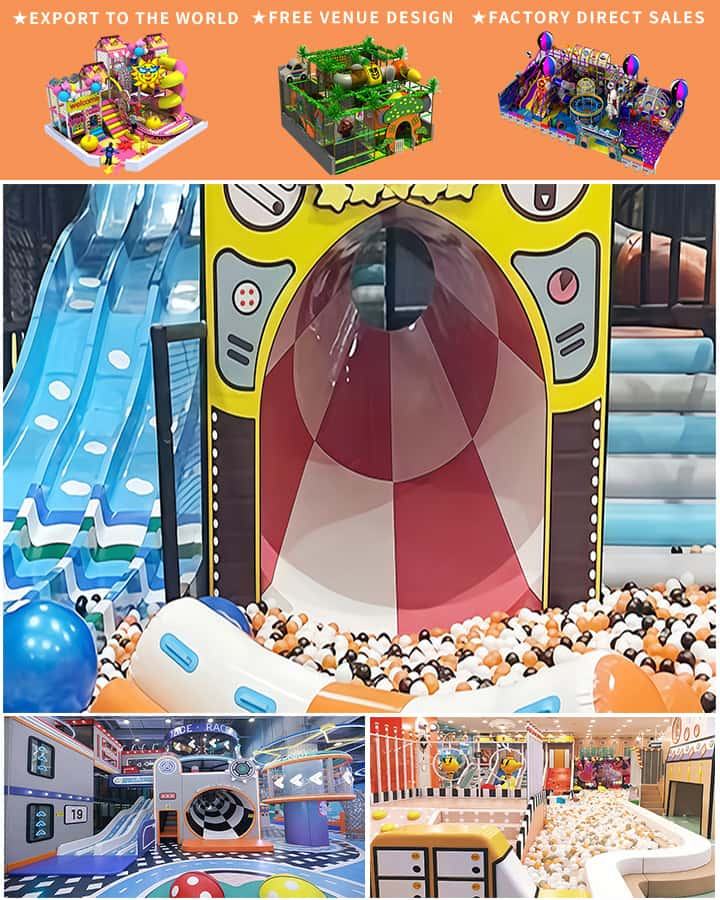In today’s fast-paced, digital world, finding safe and engaging activities for kids can be a challenge. Indoor soft playground equipment offers the ideal solution, providing a fun, stimulating environment where children can play, learn, and develop essential physical skills. This comprehensive guide will explore various aspects of indoor soft playground equipment, from its benefits to tips on choosing the best options for your needs.
What is Indoor Soft Playground Equipment?
Indoor soft playground equipment refers to a range of cushioned and padded structures designed specifically for indoor use in settings such as homes, daycare centers, schools, and indoor play areas. These structures typically include items like ball pits, climbing frames, slides, tunnels, and interactive games, all made from soft, impact-absorbing materials to ensure safety during play.
Benefits of Indoor Soft Playground Equipment
One of the most significant advantages of indoor soft playground equipment is safety. Unlike hard surfaces found in traditional playgrounds, soft playgrounds reduce the risk of injury from falls and collisions. Additionally, soft playgrounds are excellent for developing motor skills, balance, and coordination in children.
Another benefit is the versatility these playgrounds offer. They can be used regardless of weather conditions, making them a reliable option for year-round play. Indoor soft playgrounds also encourage social interaction, helping children build friendships and learn important social skills through cooperative play.
Types of Indoor Soft Playground Equipment
Ball Pit: A classic feature that provides endless fun while helping develop hand-eye coordination and motor skills. Modern versions come with various themes and colors to stimulate imaginative play.
Climbing Frame: Designed to help improve strength and agility, climbing frames can come in various shapes and sizes, offering different levels of difficulty to cater to different age groups.

Slide: An evergreen favorite, slides can be straight or spiral, providing excitement and a sense of adventure while improving balance and coordination.
Tunnels: Crawling through tunnels can enhance spatial awareness and problem-solving skills. They add an element of exploration and discovery to the playground environment.
Interactive Games: Incorporating elements like sensory walls, puzzle boards, and interactive panels can make the playground more educational, promoting cognitive development along with physical activity.
How to Choose the Right Indoor Soft Playground Equipment
When selecting indoor soft playground equipment, several factors should be considered to ensure you make the best choice for your needs:
Age Appropriateness: Different pieces of equipment are suitable for different age groups. Ensure the playground equipment matches the developmental stage and abilities of the children who will be using it.
Space Requirements: Assess the available space in your home or facility to determine what types and sizes of equipment will fit comfortably without overcrowding the area.
Safety Standards: Verify that the equipment meets local safety standards and regulations. Check for certifications and read reviews to gauge the safety and durability of the products.
Material Quality: Look for high-quality, non-toxic materials that are easy to clean and maintain. Ensure that the equipment is built to withstand regular use and remains safe over time.
Educational Value: Consider equipment that offers additional educational benefits, such as interactive games that promote learning through play.
Maintenance Tips for Indoor Soft Playground Equipment
To ensure the longevity and safety of your indoor soft playground equipment:
Regular Cleaning: Keep the equipment clean by wiping down surfaces regularly with appropriate cleaning agents. Follow manufacturer guidelines for specific cleaning instructions.
Inspections: Conduct routine inspections to check for wear and tear, loose parts, or potential hazards. Address any issues promptly to maintain safety.
Proper Storage: Store equipment correctly when not in use to prevent damage and extend its lifespan. Follow storage recommendations provided by the manufacturer.
User Guidelines: Educate users about the proper way to use each piece of equipment to minimize misuse and potential injuries.
Conclusion
Indoor soft playground equipment provides a fantastic opportunity for kids to engage in active, safe, and educational play. By understanding the various types of equipment available, considering key selection criteria, and adhering to maintenance practices, you can create an enriching environment that promotes physical, social, and cognitive development in children. So why wait? Dive into the world of indoor soft playgrounds and watch your kids thrive with joy and imagination!




